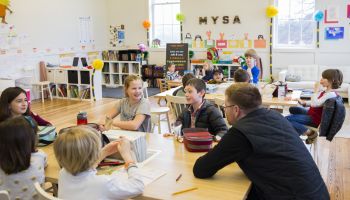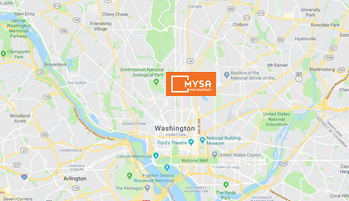
Apr 11 Food Connect Unit
Food Connect Unit
The final Connect Unit of the 2017-18 school year connected multiple conversations on food, which is something we should know a thing or two about. However, students and faculty alike quickly observed that, despite food’s essential place in our culture and its necessity for survival, there are numerous obstacles in place that obscure our full understanding of the origins and contents of our food. Our unit therefore focused on a few key questions: where does our food come from, how is it made or what does it include, and why do food inequalities persist?
The unit commenced with an understanding of the complicated system delivering our food from farm to fork and beyond, because this system does not culminate at consumption. In addition to an introduction to the concept of a food system, our learners discussed the effects of different pieces of that system breaking down. For instance, we all know what happens at the farm stage if crop yields are low due to adverse weather conditions, but what about breakdowns in our food delivery networks? How do increases in fuel prices impact food costs, and what are the political and environmental threats that affect global shipping lanes?
Students continued with a deeper understanding of the ingredients in our food, most notably scientific investigations of the molecular structure of additives and other chemical creations. We wanted our students to consider the rapid industrialization of our food as it needs to travel greater distances in multiple forms of transportation. Learners heard from a nutritionist so they could actually translate ingredient labels and identify the effects various items have on the body. Students also went on a foraging hike to see what kinds of edibles can be found on a casual walk through the woods.
We concluded with a study of food insecurities in the DC metro area. Students were actually surprised to learn that DC was divided into eight wards, in addition to the four quadrants, and that significant income inequalities persist between them. We visited Common Good City farm, which is an important example of the burgeoning urban agricultural movement. In communities where access to healthy food and produce is limited, these urban gardens serve as a necessary stopgap in low-income neighborhoods. With that, students also identified the presence of “food deserts” in DC, specifically in Ward 8, walking the two miles it takes many Anacostia community members to do their food shopping.
To reconnect to the more pastoral origins of our food, and enjoy each other’s company before the end of the year, the food unit ended with an upper and lower school camping trip to Calleva Farm in rural Maryland. Complementary to outdoor fun on ropes courses, ziplines, and white water rafting on the Potomac, students mingled with farm animals and tested their hands in the fields of an actual working farm.







